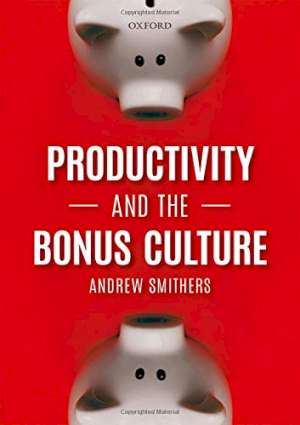02 December 2019
Productivity and Bonus Culture
Andrew Smithers
2019, Oxford University Press, 192 pages,
ISBN 9780198836117
Reviewer: Dame Kate Barker

The key line of argument in this short and provocative book runs: in the US and in the UK the outlook for real income growth is poor; a major reason for this is that weak investment is inhibiting productivity growth; the way in which executives are paid discourages investment; therefore we need to reform executive pay urgently.
In arguing for the first proposition, Smithers sets out that the two causes of the weak growth outlook are demographic change and poor productivity. (He is not impressed by the argument that it is somehow due to headwinds from the financial crisis). On the first cause, it is clear that GDP per head will be affected by the proportion of the population who are of working age.
The second cause he discusses is to some extent uncontroversial – economists would generally agree that investment in the capital stock is important to productivity and that newer capital is likely to be more productive as it embeds more recent technology. A little more controversial is the exclusion of intangibles from investment on the grounds that this does not add to the capital stock, but rather increases its efficiency (although most would agree with the incidental point here that R&D will tend to increase as measured if it is given more tax relief). However the interesting twist in the model is the suggestion that it is the return on equity which drives the hurdle rate new investment has to meet, and that this is a key determinant of NTV. (NTV is defined as the amount of current technology worth investing in; determined by leverage, interest rates, corporation tax, profit margins and the equity hurdle rate.)
Smithers goes to some lengths to demonstrate the explanatory power of his model – in the US primarily and in the UK to the extent data is available. His conclusion is that the recent fall in the investment rate can only have been driven by a rise in (unobservable) equity hurdle rates, as other elements of NTV have moved favourably.
To account for this rise in the equity hurdle rate he points to the prior change in how senior executives are paid, particularly in US and UK, with bonuses and long-term incentives generally tied to Total Shareholder Return (TSR). He points out that this favours share buybacks and dividends rather than investment, as the former tends to increase TSR and the latter to depress it. The changes in remuneration models did not come out of nowhere, but resulted from the desire of investors to have managers’ interests more closely aligned with their own.
There was indeed been a change in the structure of pay – thought I would observe that the very rapid rise in relative pay at the top of firms may be part of the wider ‘winner takes all’ culture. More recent shifts towards long-term incentive schemes (perhaps at three years not long enough!) and requirements to hold shares for a period after the vesting of awards or after leaving the company ought to increase the alignment with longer-term prospects. But these changes alone are unlikely to resolve the issue Smithers is concerned about.
Unfortunately it is not clear that his proposed solutions would prove workable. He suggests that bonuses should only be paid if productivity has risen in a company – and asserts this is easy to measure. I am not at all sure this is true if you wish to reduce it to a single number. He also suggests bonuses for large firms should be approved by a regulator – and unapproved bonuses would attract higher rates of corporation or personal taxation.
While not agreeing whole-heartedly with every step in the chain, it’s seems all too plausible that bonus structures can inhibit decisions which are good for the longer-term. Short-term investor horizons have intertwined with bonuses unhelpfully. There is some encouragement in that investors, who a few years ago were resistant to non-financial metrics in incentive schemes, are now taking more interest in measures of quality, customer service and ESG standards. This won’t meet the Smithers challenge – but is a step in a better direction.
